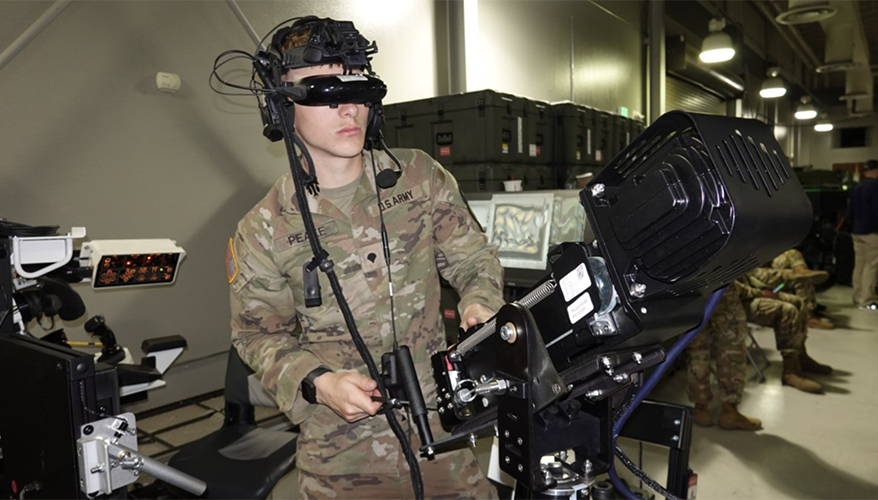TRAINING AND SIMULATION
IT2EC NEWS: U.S. Army Touts Success Fielding New Training Tech
3/25/2025
By Stew Magnuson
By Stew Magnuson

Army photo
LILLESTROM, Norway — The leader in charge of developing the Army’s high-tech simulators said the service has made great strides fielding new training systems over the past year and a half, while also establishing a new office to speed up software acquisitions.Brig. Gen. Christine Beeler, program executive officer for Simulation, Training and Instrumentation, said: “The last 18 months were exceptional for our piece of the Army’s overall testing, readiness and modernization programs," in a pre-recorded talk at Europe’s largest military training and simulation conference March 25.
Beeler and other Army PEO STRI representatives at the IT2EC conference on the outskirts of Oslo, Norway, were unable to travel to the conference, organizers said. The Pentagon has restricted non-essential travel.
Beeler recently stood up the Project Lead Office for Enterprise Transformation and Integration, which she said will “serve as a cross cutting modernization and transformation lead” for PEO STRI.
The office will concentrate on development, security and operations, an applications process that automates the security practices into software creation through all its phases.
“That will enable us to test best-in-breed [training systems] before we deploy it to the soldier in the field,” she said. “This will maximize our ability for software reuse, modern software development and agile acquisition practices,” she said.
That will be coupled with the PEO STRI's agile acquisition response team, which is tasked with rapid prototyping, she noted.
Some of the the PEO’s successes over the past 18 months include the Reconfigurable Virtual Collective Trainer that integrates simulated air and ground platforms such as the Abrams tank, Bradley Fighting Vehicle and the Black Hawk and Apache helicopters.
“The RVCT allows squads to battalions to execute collective, combined armed combat maneuver training in a mixed reality environment,” she said.
The office successfully fielded the first increment of the Synthetic Training Environment, she said. The STE program under the previous administration was considered one of the service’s top modernization priorities. The first iteration allows soldiers to combine live and virtual training with mortar units in force-on-force exercises, she said.
The Trackless Moving Target Program has introduced robotic systems that mimic the movement of vehicles and foot soldiers on diverse terrains and can withstand live ammunition being shot at them, she said.
“Our trackless moving targets provide realistic target practice, crucial for soldiers to hone their marksmanship and combat skills,” she said.
Also in the marksmanship realm, the PEO continues to work on a replacement for the Instrumentable Multiple Integrated Laser Engagement System, which allows soldiers in a training environment to use a high-tech “laser-tag” type system to shoot at each other and record casualties. The office is moving toward optical-based means to record hits and misses rather than lasers, she noted.
For non-kinetic training, the Persistent Cyber Training Environment teaches soldiers and personnel from other services to create realistic training scenarios to defend networks. “It just keeps getting better and better,” she added.
The office also opened a new Multi-Domain Operations Environmental Testbed at Fort Huachuca, Arizona, that features cyber, expeditionary, command centers, intelligence-gathering, electronic warfare and tactical training, she said.
It “will help the Army to plan, design and conduct future multi-domain operations and environments,” she said. It was already employed in the Vanguard 24 exercise where it successfully connected multiple simulators and instruments, she added.
Beeler said the Army is on an “accelerated path” to produce high-fidelity live, virtual and constructive training “at every echelon, everywhere, any time.”
That will require building on its success to converge the training systems and architectures across the portfolio. There is more work to be be done creating interoperability and data exchange, “which are critical for what the Army needs to train in the multi-domain environment,” she said.
Topics: Army News
